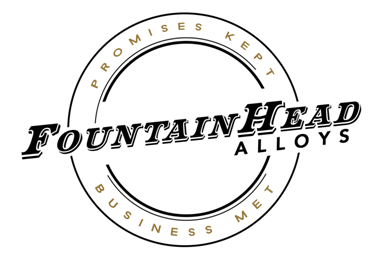Zirconium is a commercially available refractory metal with excellent corrosion resistance, good mechanical properties, very low thermal neutron cross section, and can be manufactured using standard fabrication techniques. The unique properties of zirconium made ideal cladding material for the U.S. Navy nuclear propulsion program in the 1950’s. The initial commercial nuclear power reactors used stainless steel to clad the uranium dioxide fuel due to cost. But by mid-1960 zirconium alloys were the principle cladding material due to the superior neutron economy and corrosion resistance. These same zirconium alloys are available to designers of high level nuclear waste disposal containers as internal components or external cladding. Additional advantages of zirconium alloys for long term nuclear waste disposal include excellent radiation stability and 100% compatibility with existing Zircaloy fuel cladding to alleviate any concerns of galvanic corrosion. The various zirconium alloy grades used in water-cooled nuclear reactors are also available for nuclear waste disposal components. Reactor grade designates that the material has low hafnium content suitable for nuclear service. The hafnium is typically 0.010% maximum. The American Society for Testing and Materials (ASTM) offers widely recognized grades of zirconium alloys.
Zircaloy-2 (Grade R60802) is composed of Zr-1.5%Sn- 0.15%Fe-0.1%Cr-0.05%Ni and has been predominantly used as fuel cladding in Boiling Water Reactors (BWR) and as calandria tubing in CANadian Deuterium Uranium (CANDU) reactor types.
Zircaloy-4 (Grade R60804) has removed the nickel and increased the iron content for less hydrogen uptake in certain reactor conditions. The alloy is typically used as fuel cladding in Pressurized Water Reactors (PWR) and CANDU reactors. The nominal Zircaloy-4 composition is Zr-1.5%Sn-0.2%Fe-0.1%Cr. Refinements in the ingot homogeneity have allowed tighter control of the alloy elements within the ASTM specification. Controlled Composition Zircaloy offers optimized in-reactor corrosion resistance by adjusting the alloy aim point within the ASTM specification ranges. Controlled Composition Zircaloy-4 has lower tin (1.3%) and higher iron (0.22%) than the standard grade.
Zr-2.5Nb (Grade R60904) is a binary alloy with niobium to increase the strength. The alloy has been utilized for pressure tubes in CANDU reactors. Non-reactor grade Zirconium 702 (Grade R60702) has 4.5% maximum hafnium and is also available from Wah Chang. Zirconium alloys have superior thermal properties compared to other traditional materials in consideration for spent nuclear fuel containers. Zirconium alloys have a thermal conductivity more than 30% higher than stainless steel alloys. The linear coefficient of thermal expansion for Zirconium alloys is nearly one-third the value for stainless steel giving zirconium alloys superior dimensional stability at elevated temperatures. This is an advantage in nuclear waste containers where temperatures could exceed 200ºC for hundreds of years.
Zircaloy-2 and Zircaloy-4 have a hexagonal close-packed (HCP) crystal structure at room temperature as an alpha phase. The beta phase is body centered cubic (BCC) and begins to form upon heating to approximately 810ºC. The fraction of beta phase increases with temperature until complete transformation to beta phase occurs at approximately 980ºC. Zircaloy exhibits anisotropy as a result of the HCP crystal structure. The hexagonal crystal deforms by both slip and twinning to produce a strong preferred orientation of the crystals (texture) during cold working. Typically, cold rolled Zircaloy strip will have a strong normal texture where most of the basal poles of the hexagonal crystals are orientated about 35 degrees to the transverse plane of the strip. The anisotropic properties of Zircaloy strip results in significantly higher yield strength values in the transverse direction. The control of crystallographic orientation allows designers to optimize material properties.
Zirconium Alloys Properties
Zirconium resists corrosive attack in most organic and mineral acids, strong alkalis, and some molten salts. Solutions of nitric acid (HNO3 ), sulfuric acid (H2 SO4 ), and hydrochloric acid (HCl) with impurities of ferric, cupric and nitrate ions generally result in corrosion rates of less than 0.13 mm/a (5 mpy) even at temperatures well above the boiling point curve. A tightly adherent and protective oxide film protects the metal-oxide interface to provide corrosion resistance. An additional benefit for zirconium alloys in long-term geological disposal options is the inert nature of zirconium oxide. Application of zirconium alloys alleviates the concern of nickel and chromium contamination in the ground water in severely corroded spent fuel containers.
Zirconium alloys produced by Wah Chang are available in a wide variety of sizes and shapes including plate, strip, sheet, foil, tubular products, rod, and wire. Wrought products are typically supplied in an annealed and conditioned form. One of our specialties at Wah Chang is the ability to develop alloys to meet your specifications. If you have an unusual alloy or size requirement, call us and we will be happy to help in the developmental process. THERMAL NEUTRON.
Mechanical Properties
The mechanical properties of zirconium are outlined in the following table.
| Properties | Metric | Imperial |
|---|---|---|
| Tensile strength (annealed) | 330 MPa | 47900 psi |
| Yield strength (annealed) | 230 MPa | 33400 psi |
| Modulus of elasticity | 94.5 GPa | 13700 ksi |
| Poissons ratio | 0.34 | 0.34 |
| Elongation at break (annealed) | 32% | 32% |
| Hardness, Brinell (converted from Vickers for 3000 kg load/10 mm ball. Annealed sample) | 145 | 145 |
| Hardness, Rockwell A (converted from Vickers. annealed sample) | 49 | 49 |
| Hardness, Rockwell B (converted from Vickers. Annealed sample) | 78 | 78 |
| Hardness, Vickers (annealed sample) | 150 | 150 |
Thermal Neutron Cross Sections (BARNS)
- Magnesium : 0.059
- Lead : 0.17
- Zirconium : 0.18
- Zircaloy : -4 0.22
- Aluminum : 0.23
- Iron 2.56
- Austenitic Stainless Steel : 3.1
- Nickel : 4.5
- Titanium : 6.1
- Hafnium : 104
- Boron : 750
- Cadmium : 2,520
- Gadolinium : 48,890
Applications
- Jet engines
- Knife blades
- Water-cooled nuclear reactors
- Super alloys
- Chemical processing equipment
FountainHead Alloys is ISO 9001:2015 approved. © FountainHead Alloys 1996

